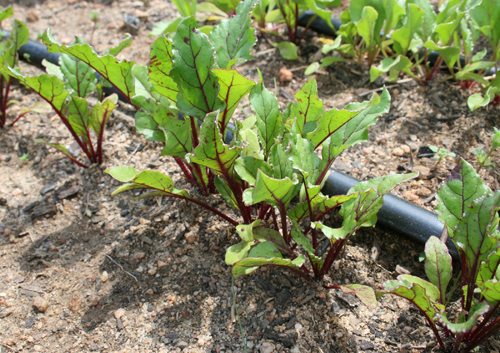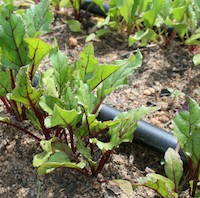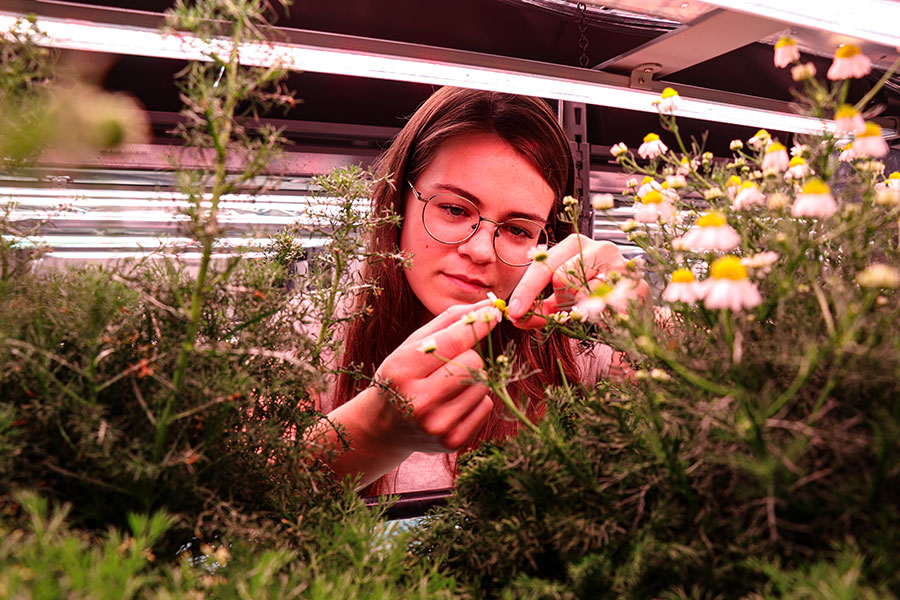Beautiful plants often don’t live up to their potential. Getting to the root of problems like disease and wilt sometimes starts with a look in the mirror, says University of Georgia experts.
“A lot of how people grow their plants can lead to disease,” said Elizabeth Little, a UGA plant pathologist with the College of Agricultural and Environmental Sciences. “Improper siting and overwatering are the biggest issues we see… most of what I see can be alleviated by people making decisions that are better for the plant.”
In order for disease to occur, a plant must be susceptible, the disease-causing pathogen must be present and the environment must be favorable for growth. Environmental factors like heat, drought, light and air circulation can affect a plant’s susceptibility to disease.
“Disease is everywhere. It’s always present in soil and the atmosphere,” said Bob Westerfield, a horticulturist with UGA Cooperative Extension. “Disease clings onto something that is in a weakened state.”
Stressed plants are more susceptible to disease. Before planting, get a soil test, and adjust the soil for optimum plant growth. Instead of crowding plants, use proper spacing to allow for air circulation and plant growth.
Waterlogged or drought-stricken?
“The most common occurrence of disease we see is through the mismanagement of water,” Westerfield said. “In most cases the soil was never prepared properly so it is soggy and doesn’t allow the water to drain off the roots.”
Plants suffering from too little or too much water often exhibit the same symptoms: yellowing leaves, shedding of older leaves and wilting. Soil-borne fungi like Pythium, phytophthora and rhizoctonia are a few threats to wet soils.
To lessen the odds of developing root rot and to increase drainage, add organic matter, install drains and don’t plant too deeply.
Humid host
Another common disease in Georgia is powdery mildew, characterized by white fungal growth on the surface of leaves, stems and flowers. The disease thrives in humid environments and is common on woody plants like roses, crape myrtles, dogwoods and oaks.
Reduce humidity – and the likelihood of developing this disease – by increasing air circulation around the plant and removing plant debris. And irrigate cautiously.
“If irrigating with a sprinkler, apply water once a week in the morning,” Little said. “If not, fungal or bacterial problems may set in.”
Choose plants that work
If trying to grow a non-native plant, help the plant adapt to the hot-dry Georgia climate by mulching around the base. Mulch will help hold moisture at the roots.
“Gardening is a learning experience,” she said. “I’ve tried a lot of things I thought I could grow here to learn what to do.”
Putting plants in the right place can limit the threat of disease, too.
“People get off base on where a plant should be planted,” Westerfield said. “A plant like a Leyland cypress looks unassuming in a two-gallon pot, but when planted too close to the house, the tree can grow 20 feet in a few years, becoming stressed and crowded and susceptible to canker disease.”
Too many chemicals
Chemicals sprayed on lawns can drift and spread to trees, shrubs and flowers planted nearby and inadvertently kill them.
“A lot of herbicides are being used in lawns, and we do get a lot of injury on plants from drift and uptake,” Little said.
Little warns homeowners to use caution when applying chemicals to their landscape.
“Homeowners assume chemicals are safe because they are being sold, and that is not the case,” she said.








